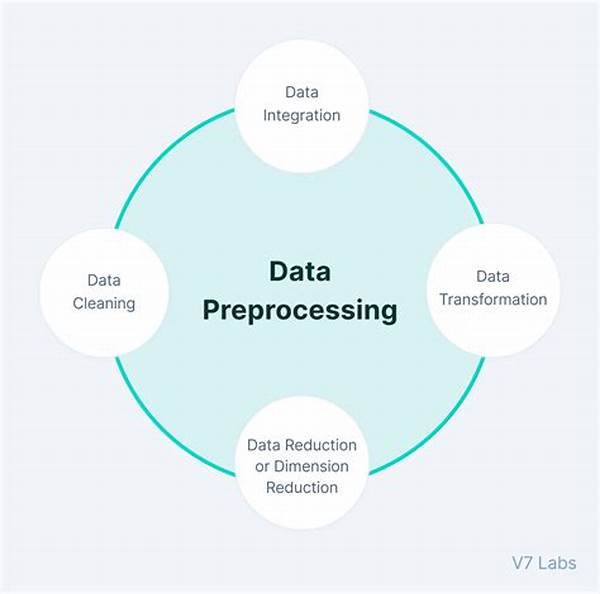Artificial Intelligence (AI) is revolutionizing the way businesses operate and transform data into actionable insights. But the magic behind AI doesn’t just happen by itself. In fact, one of the crucial steps in the AI pipeline is data preprocessing. Consider it the unsung hero, the stage where raw data is cleaned, transformed, and prepared for analysis. Think of data preprocessing like a chef preparing ingredients before cooking – no matter how fresh the vegetables, if they aren’t washed and chopped to perfection, the dish might not turn out right.
In today’s data-driven world, organizations are inundated with data from various sources. Unfiltered, this data can be messy, incomplete, and inconsistent. That’s where understanding AI data preprocessing becomes vital. It’s the art and science of converting raw data into a format that computers can efficiently analyze. This process involves a mix of techniques like data cleaning, integration, transformation, and reduction. Each of these techniques plays a role in improving the quality of data and ensuring that AI models function with precision and accuracy.
Understanding AI data preprocessing is not just about cleaning up the mess; it’s about gaining insights that are hidden beneath the layers of chaos. Without proper preprocessing, even the most advanced AI algorithms would struggle. And if you’re wondering why your AI project isn’t yielding expected results, it might be due to inadequate data preprocessing. The significance of this stage can be likened to laying down a foundation while building a house – get it right, and the structure stands tall and robust.
But why all this excitement about understanding AI data preprocessing? Simply put, it’s the foundation that maximizes the value of AI. Just as no artist can create a masterpiece without a clean canvas, no AI model can perform optimally without well-preprocessed data. It’s the difference between an AI system that merely functions and one that performs remarkably. Businesses don’t just want functioning systems; they desire exceptional systems that offer competitive advantages.
The Importance of Data Cleaning
Data cleaning is a critical part of understanding AI data preprocessing. When data is collected, it’s often riddled with errors, null values, or outright misinformation. Cleaning transforms this chaos into clarity, removing duplicated entries, correcting inconsistencies, and filling in gaps. Consider it the digital spring cleaning for your data! Consistently cleaned data leads to more accurate predictions and insights, which can radically transform business outcomes.
—
The Journey of Data: From Raw to Refined
Let’s embark on a journey through the stages of understanding AI data preprocessing. At its core, data preprocessing involves several critical steps designed to mold disorderly data into a refined, insightful powerhouse. These steps include data cleaning, integration, transformation, and reduction. Each component pushes data further up the evolutionary ladder, turning it from raw potential to refined reality.
The Art of Data Transformation
An integral part of understanding AI data preprocessing is data transformation. This phase modifies data to create a structure compatible with machine learning algorithms. Whether it’s normalization, denormalization, or various encoding techniques, transformation morphs data in a way that AI can comprehend and interpret seamlessly.
Data Integration: A Unified Approach
In the journey of understanding AI data preprocessing, data integration holds a special place. Often, valuable data lies scattered across various sources. Integration combines these segments into a singular, cohesive dataset, ensuring that the AI model has a holistic perspective. This unification is the reason behind AI’s ability to predict trends that others might overlook.
Tagging and Organizing Preprocessed Data
While understanding AI data preprocessing, tagging emerges as an essential practice. By tagging data effectively, organizations can streamline data retrieval and analysis. Proper tagging enhances data organization and ensures that AI models work with the most relevant and updated information.
—
Goals of AI Data Preprocessing
In understanding AI data preprocessing, several objectives are pivotal:
Understanding AI data preprocessing is akin to giving your car a tune-up before a long drive. It might take a little time and effort, but the result is a smoother journey and an assurance of reaching your destination without any hitches.
Moving forward, it’s imperative for businesses and tech enthusiasts alike to acknowledge the role of understanding AI data preprocessing. By comprehending its importance and application, they can harness the true potential of AI, turning challenges into opportunities and uncertain futures into clear pathways.
—

